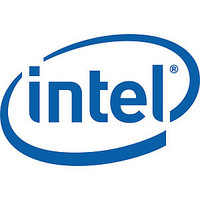lxt351 Intel Corporation, lxt351 Datasheet - Page 10

lxt351
Manufacturer Part Number
lxt351
Description
T1/e1 Short Haul Transceiver With Crystal-less Jitter Attenuation
Manufacturer
Intel Corporation
Datasheet
1.LXT351.pdf
(46 pages)
LXT351 — T1/E1 Short Haul Transceiver with Crystal-less Jitter Attenuation
10
1. DI = Digital Input; DO = Digital Output; DI/O = Digital Input/Output; AI = Analog Input; AO = Analog Output.
PLCC
1
2
3
4
5
6
7
8
Table 3.
Pin #
QFP
39
41
42
43
2
3
4
5
LXT351 Signal Descriptions
TPOS / TDATA /
TNEG / INSBPV
RPOS / RDATA
RNEG / BPV
ALE / AS
Symbol
INSLER
MCLK
TCLK
RCLK
I/O
DO
DO
DO
DI
DI
DI
DI
DI
1
Master Clock. External, independent clock signal required to generate
internal clocks. For T1 applications, a 1.544 MHz clock is required; for E1,
a 2.048 MHz clock. MCLK must be jitter-free and have an accuracy better
than ± 50 ppm with a typical duty cycle of 50%. Upon Loss of Signal (LOS),
RCLK is derived from MCLK.
Transmit Clock. For T1 applications, a 1.544 MHz clock is required; for
E1, a 2.048 MHz clock. The transceiver samples TPOS and TNEG on the
falling edge of TCLK (or MCLK, if TCLK is not present).
BIPOLAR MODES:
Transmit – Positive and Negative. TPOS and TNEG are the positive and
negative sides of a bipolar input pair. Data to be transmitted onto the
twisted-pair line is input at these pins. TPOS/TNEG are sampled on the
falling edge of TCLK (or MCLK, if TCLK is not present).
UNIPOLAR MODES:
Transmit Data. TDATA carries unipolar data to be transmitted onto the
twisted-pair line and is sampled on the falling edge of TCLK.
Transmit Insert Logic Error. In QRSS mode, a Low-to-High transition on
INSLER inserts a logic error into the transmitted QRSS data pattern. The
error follows the data flow of the active loopback mode. The LXT351
samples this pin on the falling edge of TCLK (or MCLK, if TCLK is not
present).
Transmit Insert Bipolar Violation. INSBPV is sampled on the falling edge
of TCLK (or MCLK, if TCLK is not present) to control Bipolar Violation
(BPV) insertions in the transmit data stream. A Low-to-High transition is
required to insert each BPV. In QRSS mode, the BPV is inserted into the
transmitted QRSS pattern.
Address Latch Enable. Connect to ALE signal of Intel microprocessor
Address Strobe Connect to AS signal of Motorola microprocessor.
Note that leaving this pin floating forces all output pins to a high impedance
state.
BIPOLAR MODES:
Receive – Negative and Positive. RPOS and RNEG are the positive and
negative sides of a bipolar output pair. Data recovered from the line
interface is output on these pins. A signal on RNEG corresponds to receipt
of a negative pulse on RTIP/RRING. A signal on RPOS corresponds to
receipt of a positive pulse on RTIP/RRING. RNEG/RPOS are Non-Return-
to-Zero (NRZ). The PLCKE bit in register CR3 selects the RCLK clock
edge when RPOS /RNEG are stable and valid.
UNIPOLAR MODES:
Receive Bipolar Violation. BPV goes High to indicate detection of a
bipolar violation from the line. This is an NRZ output, valid on the rising
edge of RCLK.
Receive Data. RDATA is the unipolar NRZ output of data recovered from
the line interface. The PLCKE bit in register CR3 selects the RCLK clock
edge when RDATA is stable and valid.
Receive Recovered Clock. The clock recovered from the line input signal
is output on this pin. Under LOS conditions, there is a smooth transition
from the RCLK signal (derived from the recovered data) to the MCLK
signal at the RCLK pin.
Description
Datasheet











